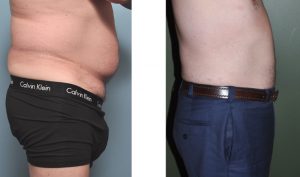Liposuction is a well known body contouring procedure that is widely used to remove excess areas of fat that is resistant to diet and exercise. There are many reasons that people undergo liposuction and the timing may be related to an upcoming event (wedding, vacation, reunion) or that they just have gotten frustrated with it not going anywhere despite their best effort.
One of the more interesting reasons for liposuction that I have observed over the years is from patients in the military. According to the many times that I have heard the same story, they need it to pass a body fat test so that they can continue to serve in the military and/or avoid demerits which may hurt their chances for promotion.
This prompted me to investigate what this body fat test was. My research shows that there is no maximum weight at which one can not serve in all branches of he military. As it turns out weight is not the standard, but body fat percentage is. Body fat standards are used to determine eligibility for enlistment as well as to maintain these standards after joining. Military personnel are periodically weighed and measured around the neck and abdomen. This information is then used in the Department of Defense formula to compute body-fat percentage. For males, the formula is % body fat = 86.010 x log10(abdomen – neck) – 70.041 x log10(height) + 36.76, and for females, the formula is % body fat = 163.205 x log10(waist + hip – neck) – 97.684 x log10(height) – 78.387. These complicated formulas have been around for some time and are highly criticized as outdated and not reflective of modern-day body types.

How effective is liposuction at reducing one’s waistline? That depends on the size of the waistline and the body build of the patient. But when the entire abdomen as well as the flanks is done, which treats a near 360 degrees around, the average waistline reduction will be between 1 to 3 inches. Expecting waistline reductions of 4 , 6 or 8 inches, as I have some military people ask, is not realistic. But every military person that I have ever treated with liposuction has reported back that they have passed the test.
Dr. Barry Eppley
Indianapolis, Indiana


